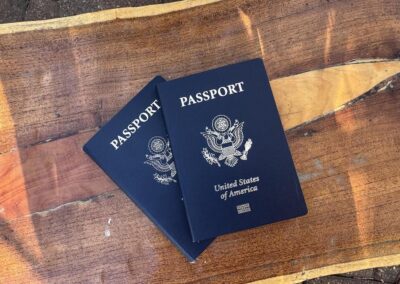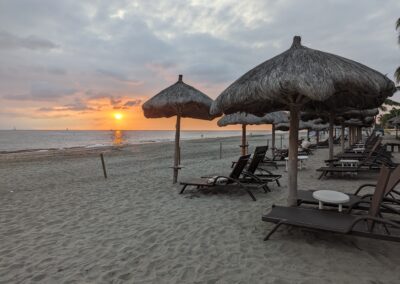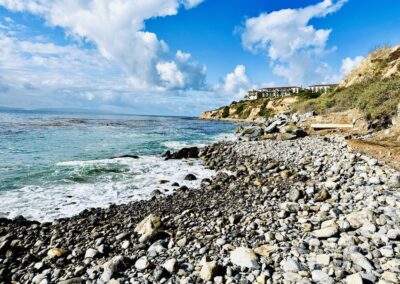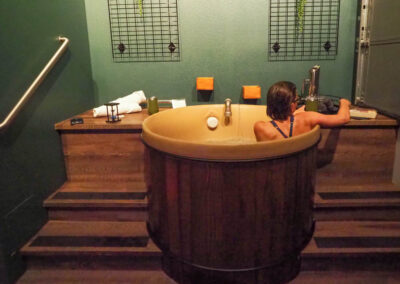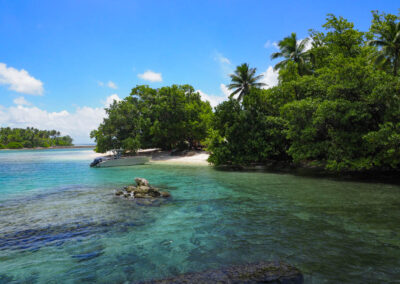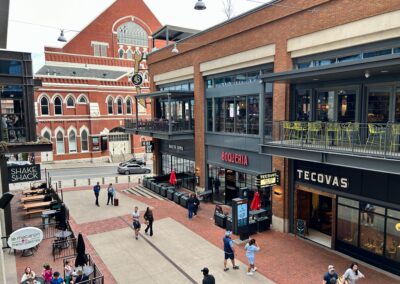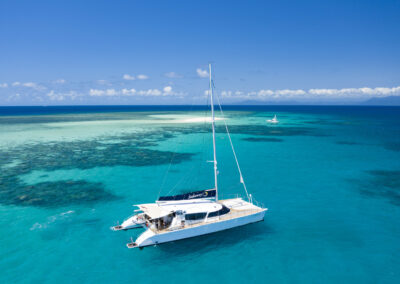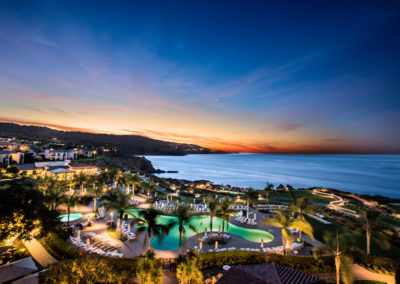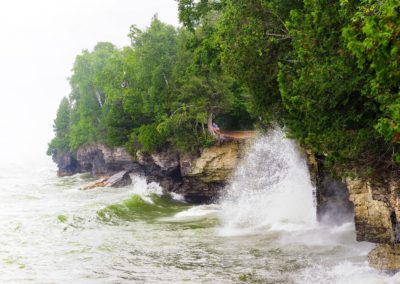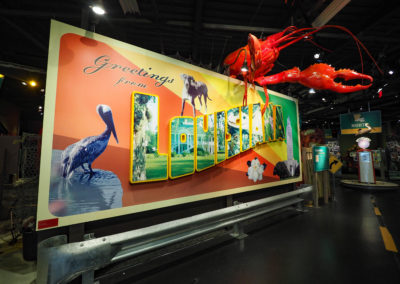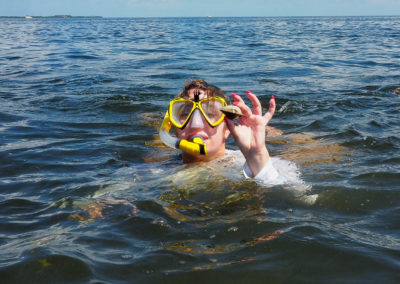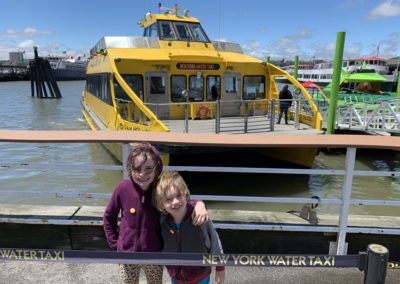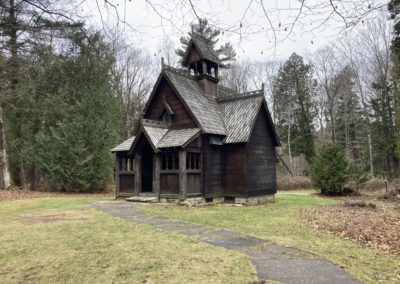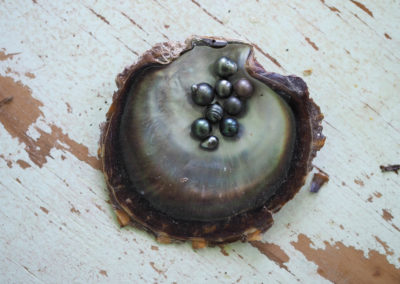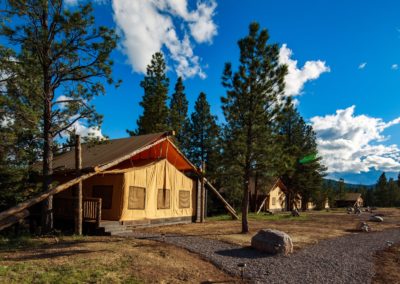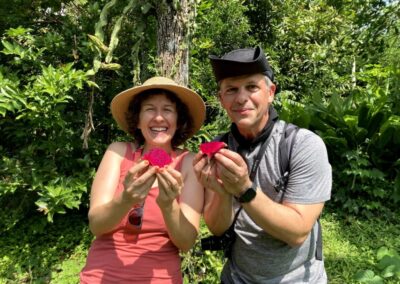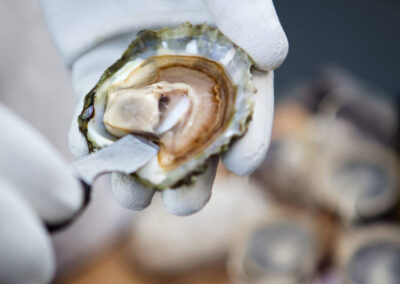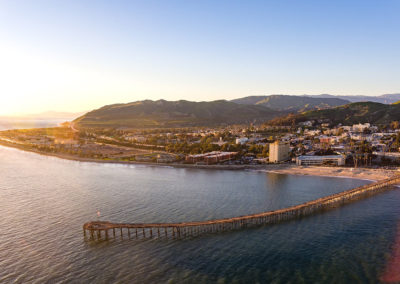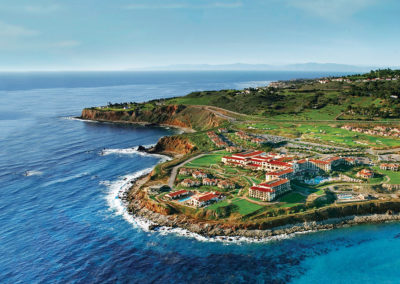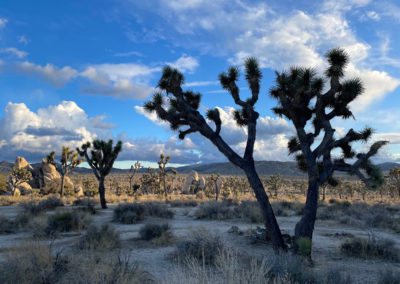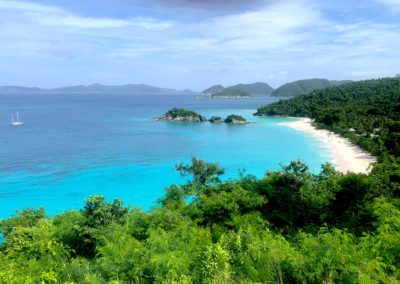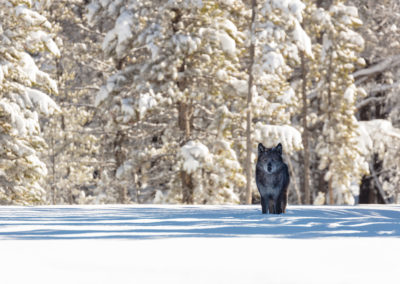Twenty years ago, my husband and I tied the knot on the powder-sugar sands of Trunk Bay on St. John, the tiny Caribbean island where we lived and worked for the first few carefree years of our marriage.
This summer, we celebrated our anniversary with a month-long return to the island that has become our happy place, our home away from home, and the spot we revisit as often as we can with our three kids to recharge and take life at a slower, simpler and saltier pace.

Trunk Bay has been named one of the top 10 beaches in the world. Photo by Mauri Elbel
Roughly two-thirds of St. John is designated as Virgin Islands National Park, so undeveloped lush green hills, pristine pearly white beaches and gin-clear turquoise waters offer the kind of unspoiled beauty that’s lacking from many of its Caribbean neighbors. You won’t find any all-inclusive resorts, highways, or even a single traffic light on the 19-square-mile island occupied by about 4,000 residents. Here, folks drive on the left side of the narrow, switchback-riddled roads, honking before hairpin turns and making frequent stops for the island’s non–human residents –– donkeys, goats, mongoose, chickens, deer and iguanas.

St. John donkeys lounging on Honeymoon Beach. Photo by Mauri Elbel
On St. John, the smallest and most pristine of the three main U.S. Virgin Islands, it’s easy to distance ourselves from the day-to-day stresses waiting back home. Here, our days begin with sherbert sunrises and rooster crows and end with cotton candy sunsets and cooling trade winds. Somewhere in between, you’ll find us submerged in Mother Nature’s saltwater swimming pool.
Getting to St. John from Austin is not particularly easy. There is no airport on St. John, and there are no direct flights from Austin to neighboring St. Thomas. From door to door, it’s usually a 16-hour travel day involving two or three flights, an hour-long crowded taxi van ride from the St. Thomas airport to the ferry dock in Red Hook, a 20-minute, hair-whipping ferry ride to Cruz Bay on St. John, and a hilly Jeep ride to our final island destination. But each time we set foot on this island paradise, every moment of the exhausting travel is rendered insignificant. And by now, our kids ages 9, 13 and 16, have each logged more trips to St. John than the number of years they’ve been alive and take the arduous travel in stride, knowing what awaits is well worth the effort to get here.
I fell in love with St. John the very first day I set foot on the island during a family trip my senior year of college. A few months after graduating from The University of Texas, I swapped the fluorescent lit cubical of my media relations job for an unpaid work-exchange program in the Caribbean sunshine. I worked for four hours a day as a housekeeper at an eco-tourism resort on the island, cleaning guest tents (unpaid) in exchange for free lodging and getting to spend the remainder of the day on the most breathtaking beaches on which I’d ever laid eyes on. After my six-week work exchange program ended, I wasn’t ready to leave. I hitch-hiked into Cruz Bay and got hired as the sole writer and copy editor at the island’s only newspaper. I spent the next blissful few years filling the weekly newspaper with island happenings and spending my weekends on beaches and boats.
Over the past two decades, my love for this special island we used to call home has only grown –– especially now that it’s become a beloved escape for our own children. If you’re planning a trip to St. John, here’s an insider’s guide to the best beaches, hikes, things to do, and places to stay on the island.

Trunk Bay, known for its quarter-mile strip of pillowy white sand and sparkling water so blue and clear it could serve as Mother Nature’s swimming pool, is ranked as one of the top beaches in the world and is undoubtably the most popular beach on St. John. Photo by Mauri Elbel
Beaches: A bay for every day
Our family has one rule when we’re on St. John: every day is a beach day. St. John boasts more breathtaking bays than the number of days you’ll have to experience them all, and I’d always recommend starting with the unspoiled beaches lining the island’s North Shore.
RELATED: St. John: A perfect week in paradise
Trunk Bay, known for its crescent of pillowy white sand lapped by crystal-clear aquamarine water, is ranked as one of the top beaches in the world and is undoubtedly the most popular (and most photographed) beach on St. John. By mid-morning, tourists start to trickle on to St. John’s most popular strips of sand. But if crowds aren’t your thing, hit the beach early in the mornings or evenings and you’ll have your own private paradise. During the really low off-season (late-August to mid-November), you’re likely to find yourself solo on the sand no matter the time of day.

Maho Bay is your best bet for seeing sea turtles on St. John. But keep your distance and never touch them. Photo by Finn Albrecht
Maho Bay, known for its calm, shallow waters, is ideal for families with little ones. It’s also your best bet for spotting sea turtles –– lush seagrass beds provide a hearty habitat for green sea turtles just off the shallow shore. You’ll spot dozens of these graceful creatures as you swim in the still bay, but be sure to keep your distance and never touch a sea turtle (or any sea life).
If you’re looking for a less busy bay, head just a little farther down the road to tranquil Francis Bay. This serene stretch of golden sand is the last beach along St. John’s North Shore, and its clear, glasslike water is ideal for swimming and snorkeling. Here, we usually spot a few sea turtles, some schools of juvenile fish, and a couple sting rays –– but we’ve seen everything from octopus and starfish to a baby black tip reef shark and squid just off the shore.

Gorgeous Gibney/Oppenheimer Beach rarely has anyone on it because there are very few parking spaces. Photo by Mauri Elbel
Gorgeous Gibney Beach is one of St. John’s true gems and our kids’ hands-down favorite beach, with its secluded sugar-sand beach flanked by lush green sea grapes and clear turquoise waters painting a real-life postcard. Parking is extremely limited at Gibney and Oppenheimer beaches, but if you’re lucky enough to snag a spot, you’ll be one of the few people there.
Heart-pumping hikes with complimentary cooldowns
Hiking along the 20-plus trails weaving through the V.I. National Park is a great way to get a workout while soaking in some of the island’s history. An added perk? All of my favorite trails end with a complimentary cool-down at a nearby beach.
If you’re up for the challenge, the 6-mile roundtrip Reef Bay Trail weaves through some of the island’s oldest and tallest trees. Take the trail spur to see ancient petroglyphs carved around 900-1500 AD by the pre-Columbian Taino and their ancestors before exploring the Reef Bay Sugar Mill ruins that produced brown sugar rum and molasses until 1916. Cool off in the wavy waters of remote Reef Bay on St. John’s south shore before making the grueling uphill hike back.

Views of Maho and Francis Bays can be captured from America Hill. Photo by Mauri Elbel
Wander past the ruins of the historic Cinnamon Bay Sugar Plantation before taking the short but steep hike to the 19th century America Hill Great House Ruins. The uphill hike cuts through a forest shaded with towering mango, genip and guava berry trees, and at the top, efforts are rewarded with dramatic views of Maho and Francis Bays below. Cool down afterward at breezy Cinnamon Bay, St. John’s longest beach.
Hike to Honeymoon Beach via the Lind Point Trail –– from the trailhead at the National Park Visitor Center in Cruz Bay, it’s less than a 2-mile round trip hike, making it doable even for young kids. Stunning Honeymoon and its sibling white-sand beach, Salomon, can only be reached by foot or boat, making them more secluded than others lining the island’s North Shore, especially early in the morning before a fleet of charter boats moors in the bay.

Honeymoon (pictured here) and Salomon beaches can be accessed from the same trail. Photo by Mauri Elbel
RELATED: Slowing down by the sea in Ambergris Caye, Belize
Trek out to the more bucolic side of the island and start your day hiking to the summit of Ram Head –– the southernmost point on St. John. From serene and sundrenched Salt Pond Bay, follow the mile-long narrow trail along a rocky beach, steep climbs and craggy cliffs until you reach the 360-degree sweeping ocean views at the top. Afterward, dip into the cool, clear waters of Salt Pond Bay, or wander to windswept Drunk Bay where you can make your own artistic creations from beach rocks and driftwood.

For a luxurious, eco-friendly stay on St. John with jaw-dropping views, check out Calichi at Picture Point. Photo by Mauri Elbel
Split your stay
St. John boasts a raw splendor that sets it apart from other Caribbean destinations riddled with over-development and high-rise hotels competing for shoreline space. On St. John, travelers have their pick from luxury boutique accommodations and cozy inns to sprawling vacation villas and Caribbean cottages. We like to split our stay between the two main sides of the island, Cruz Bay and Coral Bay.
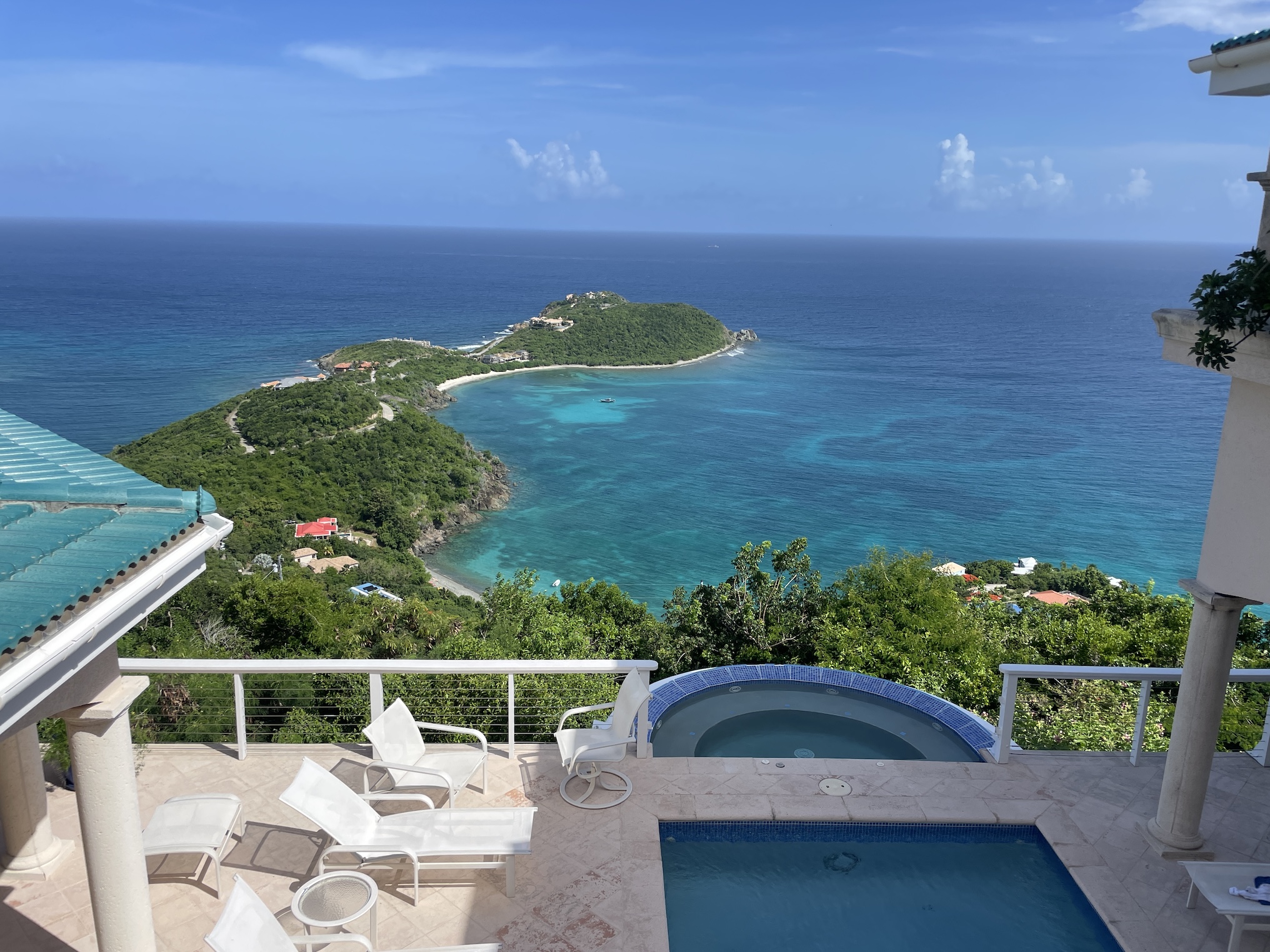
The stunning view from Out of the Blue villa on St. John. Photo by Mauri Elbel
This trip was our third time staying at Calichi at Picture Point, an eco-meets-luxury private villa enclave perched 1,200 feet above sea level on Bordeaux Mountain overlooking Coral Bay. From the stunning Tower Villa at the top of the property, sailboats gently rock in the sun-kissed harbor, and you get a panoramic view of the surrounding islands just beyond — St. Thomas, Puerto Rico and Vieques to the west, Tortola and Jost Van Dyke to the north, and St. Croix to the south. Just 10 minutes past Cruz Bay on other side of the island, we booked the sprawling Out of the Blue vacation villa, looking out on the bejeweled waters of Rendezvous Bay and Ditliff Point on the island’s South Shore.
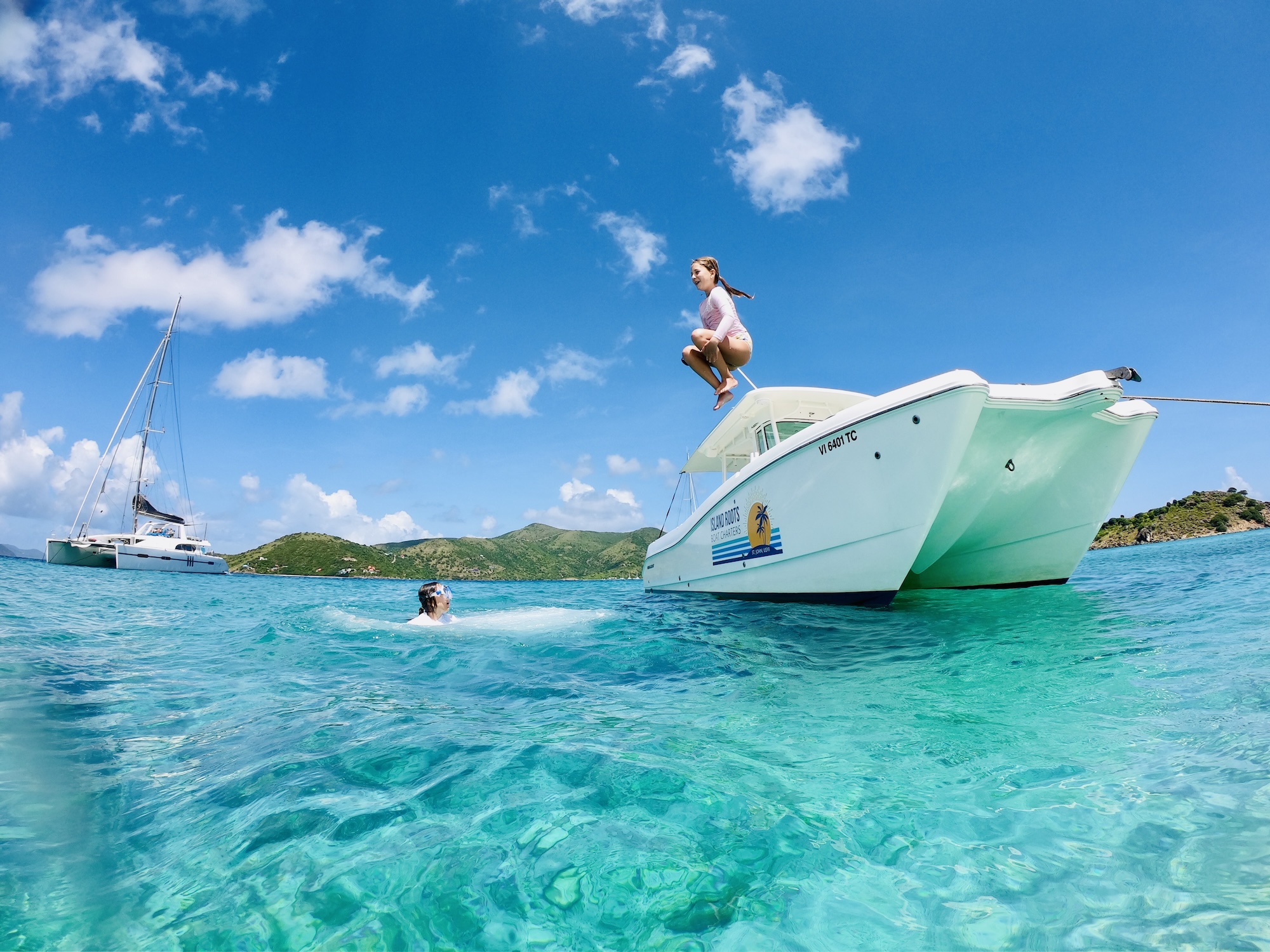
Book an unforgettable day at sea with Island Roots Boat Charters on St. John. Photo by Mauri Elbel
Boating to the BVI
One of the perks of a St. John vacation is that you are surrounded by the neighboring British Virgin Islands, just a boat trip away. If your time and wallet allow you to explore this mariner’s paradise, put island hopping to the nearby BVIs high on your St. John bucket list (private charters between the U.S. Virgin Islands and the BVIs have resumed since Covid but at a much higher price tag).
We booked a full-day extended BVI private charter with Island Roots Charters, a longstanding locally owned charter boat company that offers customized itineraries to the top destinations in the Virgin Islands. By 8 a.m., Captain Ryan was waiting for us at the National Park Dock in Cruz Bay ready to whisk us away in a luxurious 32-foot World Cat power catamaran. After checking into customs on Tortola’s West End, we stopped off to swim in the unbelievably blue waters surrounding Sandy Spit, a tiny uninhabited islet that looks like a scene straight out of a pirate movie. We made our way up Tortola’s North Shore, mooring at Rogues Bay, where we watched our kids wave jump and rock climb along the secluded, completely deserted beach.
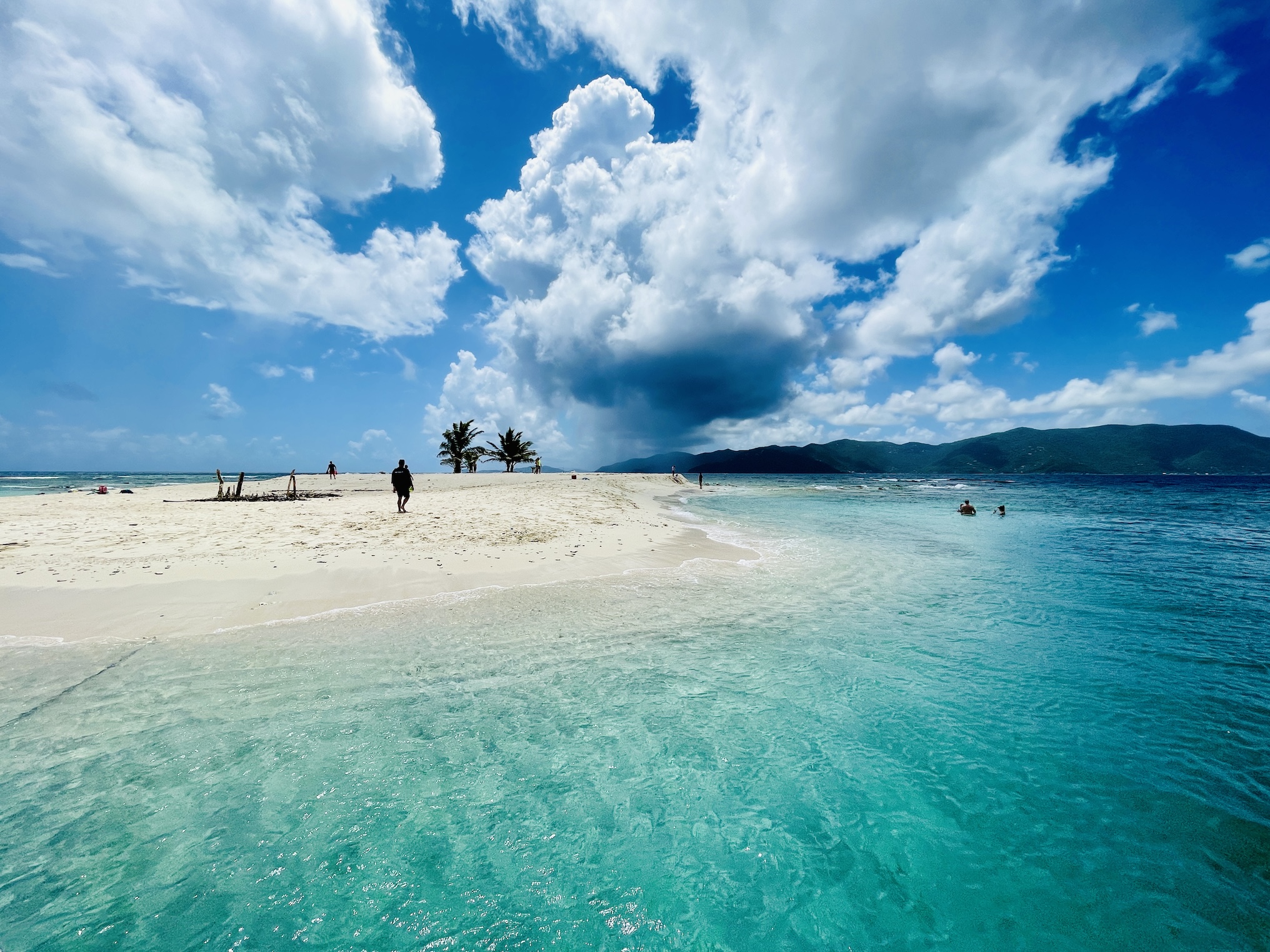
This small uninhabited island, also known as Sandy Spit, gets its name from being “spitting distance” to Jost Van Dyke. Photo by Mauri Elbel
By lunchtime, we reached our main destination and one of my favorite spots in the entire Caribbean: The Baths at Virgin Gorda –– gargantuan granite boulders that rise up from teal seas and create natural grottos and secluded saltwater pools you can explore. After lunch and rum punches on Devil’s Bay, we headed to snorkel The Indians, a small archipelago of islets known for exceptional underwater life. We ended the day sipping painkillers –– a signature Caribbean cocktail concocted of dark rum, pineapple and orange juices, cream of coconut and freshly-grated nutmeg –– as the sun set on Jost Van Dyke’s White Bay, a blindingly white beach flanked with verdant palms and thatched-roof beach bars and Gatorade-blue water. It was a dreamy day at sea and the highlight of our month-long return to our favorite place on earth.
If You Go

Getting there:
Fly into Cyril E. King International Airport on St. Thomas and take a taxi to the ferry dock in Red Hook, which offers ferry service every hour on the hour to Cruz Bay on St. John. We always rent a Jeep from St. John Jeeps, but if you stay in Cruz Bay, you can get around in colorful open-air taxis.

Stay:
We love staying at Calichi, a luxury-meets-sustainability villa compound on Bordeaux Mountain above Coral Bay. Just past Cruz Bay, Out of the Blue villa features four spacious private master bedroom suites wrapping a constantly-shaded pool with stunning views overlooking Rendezvous Bay.
Do:
Spend your days beaching, swimming, snorkeling, scuba diving, hiking, boating and exploring historic ruins — all of which can be done without crowds in the off season (late-August to mid-November) when you’ll also find reduced lodging rates and empty beaches.
Eat + Drink:
Taste the island’s authentic flavors by grabbing a West Indian saltfish or beef pate from Hercules Pate Delight for breakfast on your way to beach or refueling with conch fritters or callaloo soup at Miss Lucy’s on the other side of the island. Sink your teeth into the island’s best burgers at Skinny Legs in Coral Bay. Reserve a table at Morgan’s Mango for Caribbean Lobster Night, which takes place every Tuesday and Saturday night, to enjoy local spiny Caribbean lobsters caught that morning and grilled to perfection the same evening. For island fine dining, make reservations at La Tapa, The Terrace, Extra Virgin Bistro, or ZoZo’s. Check websites for hours –– many restaurants close during off-season.

Insider tip:
While you don’t technically need a passport to visit the U.S. Virgin Islands (if you don’t have a passport, you will still need a valid government-issued photo ID and seal-raised birth certificate to show proof of citizenship when going through Customs to leave the territory), you must have a passport if you want to visit the neighboring British Virgin Islands.









